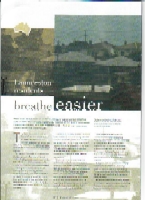Launceston wood fire smoke strategy … $s to replace wood fires
Launceston sits in the Tamar Valley in Northern Tasmania. While most people would associate Tasmania with clean air and the Roaring Forties, in Launceston, the picture can be very different.
With a river valley that runs roughly north-south and prevailing breezes that are predominantly east-west in winter, the valley has become notorious for smoke building up on those clear quiet winter days when there is no wind.
Unlike most other cities in Australia, Launceston is a demonstration project for reducing the smoke by encouraging people to not use their fireplaces at all!
Rather than try to ‘encourage’ people not to burn incorrect fuel, rubbish etc, what better way to reduce smoke and reduce pressure on firewood sources than to provide a subsidy to people to convert to other more suitable fuels? And in Tasmania, in winter, what is more ‘renewable’ than hydroelectric power?
In other areas however the known nuisance and health impacts of smoke from fireplaces continues to be ignored or rather, the impacts are considered insufficient to implement similar policies to those in place in Launceston. For example in SEQ, where energy-efficient and climatically responsive building design can eliminate the need for fireplaces, fireplaces can still be installed and there appear to be no controls on location, fuels, or impacts.
The optimum outcome for Brisbane could well be to implement building design guidelines and, if it can be done in Launceston, it can be done in Brisbane…pay people to convert from fireplaces!
Brisbane led Australia in banning backyard incinerators and the weekend ‘burn-off’ and has done well with garbage reduction and recycling. Why not lead Australia by requiring climatically responsive buildings and thus remove the ‘need’ for fireplaces? Banning all domestic wood-fired fireplaces would be a logical outcome.

For more information (a copy of an article in Natural Heritage #13 Spring 2002), click on Launceston or go to
http://www.nht.gov.au then search for your area of interest.